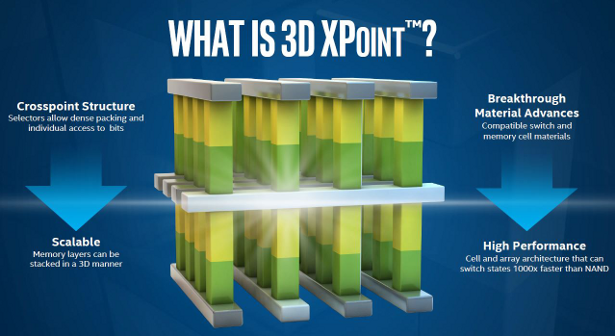We had the opportunity last week to chat with Kevin Kilbuck, Micron’s director of NAND strategic planning, to discuss their current 3D NAND generation, as well as their future 3D NAND plans. Not only for SSDs, data storage usage opportunites for NAND continue to grow in embedded markets, such as mobile devices, automotive, industrial and the Internet of Things. In recognition of these increasing customer demands, Micron is creating their own client, hyperscale and mobile computing offerings that utilize their current (gen. 1) 3D NAND.
 First to market will be Micron’s 3D NAND-based client SSDs, which are anticipated to have general availability in the first half of 2016. Both the MLC and TLC versions will be produced in both the M.2 and 2.5″ form factors. Enterprise and mobile device versions are anticipated for later in 2016 and early 2017.
First to market will be Micron’s 3D NAND-based client SSDs, which are anticipated to have general availability in the first half of 2016. Both the MLC and TLC versions will be produced in both the M.2 and 2.5″ form factors. Enterprise and mobile device versions are anticipated for later in 2016 and early 2017.
 Micron’s current (Gen. 1) 3D NAND architecture stacks 32 storage tiers, creating the highest density NAND die currently available, with the same capacity as others require 48 tiers to achieve. Their floating gate technology provides higher density, as well as better performance and improved reliability. Micron plans to add additional tiers in future generations, which could provide up to 3.2TB of storage in the M.2 form factor, and up to 10TB of storage in the standard 2.5″ form factor.
Micron’s current (Gen. 1) 3D NAND architecture stacks 32 storage tiers, creating the highest density NAND die currently available, with the same capacity as others require 48 tiers to achieve. Their floating gate technology provides higher density, as well as better performance and improved reliability. Micron plans to add additional tiers in future generations, which could provide up to 3.2TB of storage in the M.2 form factor, and up to 10TB of storage in the standard 2.5″ form factor.
 Micron recognizes that having strong ecosystem partners is a key part of attaining broad market adoption. For SSD storage, whether it be in consumer drives, laptops/notebooks, or for data center applications, controller development is key in addition to 3D NAND development. Micron has chosen PMC as its controller partner for enterprise and hyperscale drives, and has chosen Silicon Motion as its client drive partner. Both of these companies are well-established controller providers, with Silicon Motion announcing at CES 2016 that their latest SM2246EN controller now supports 3D NAND.
Micron recognizes that having strong ecosystem partners is a key part of attaining broad market adoption. For SSD storage, whether it be in consumer drives, laptops/notebooks, or for data center applications, controller development is key in addition to 3D NAND development. Micron has chosen PMC as its controller partner for enterprise and hyperscale drives, and has chosen Silicon Motion as its client drive partner. Both of these companies are well-established controller providers, with Silicon Motion announcing at CES 2016 that their latest SM2246EN controller now supports 3D NAND.
 Looking at all market segments, Micron anticipates the majority of its total NAND flash output will be in 3D NAND by the second half of 2016. Micron’s Gen.2 3D NAND is anticipated for 2017, with discussion already taking place for a Gen.3 version. You can visit Micron’s 3D NAND blog discussion here for more information.
Looking at all market segments, Micron anticipates the majority of its total NAND flash output will be in 3D NAND by the second half of 2016. Micron’s Gen.2 3D NAND is anticipated for 2017, with discussion already taking place for a Gen.3 version. You can visit Micron’s 3D NAND blog discussion here for more information.
 The SSD Review The Worlds Dedicated SSD Education and Review Resource |
The SSD Review The Worlds Dedicated SSD Education and Review Resource | 
Not to sound too negative, but when your tlc drive bx200 is just about the slowest ssd out in file transfers, and Samsung, Toshiba, and skhynix are already more advanced in the nand category. the announcement for better 3d nand is just an announcement until proven better.